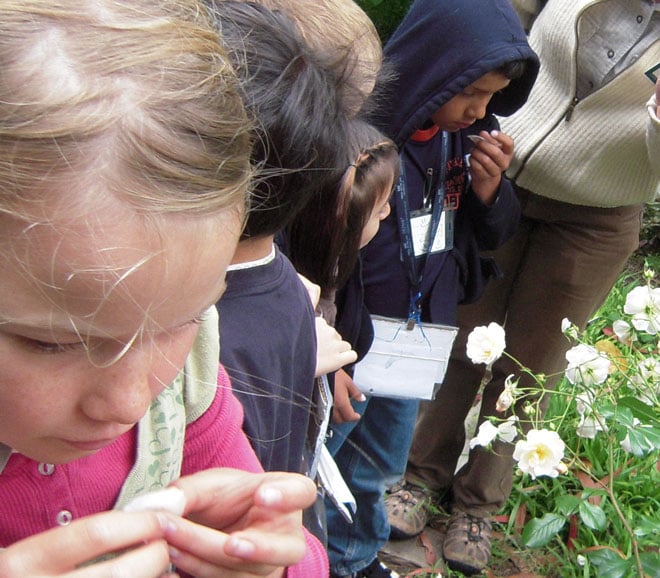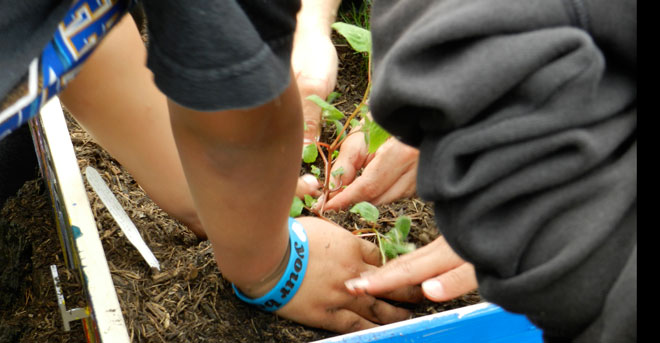
Cultivating Wonder

Contributor
Technology pervades every corner of our lives. Recently, I read where a little one said, “I like the indoors better because that’s where all the outlets are.” The Youth Education Program at the San Francisco Botanical Garden has been enticing kids and their families into the great outdoors, stimulating wonder and curiosity, and growing the next generation of Earth’s custodians for more than 40 years. Oh—and having fun.
A conversation between editor Lorene Edwards Forkner and Annette Huddle, Director of Youth Education at the San Francisco Botanical Garden

LEF: Tell me a little bit about how the Youth Education Program came to be.
AH: We are a group of people who love the garden and want to share it with others. The first garden docents were trained for the Golden Gate Park Centennial celebration in 1970. Our Guided School Walk program began at that time as a way to involve children as well as adults.
LEF: What is the reach and scope of the program today?
AH: Guided School Walks are still the mainstay of our program with six different theme walks presented throughout the school year. Teachers bring close to 6000 students—kindergarten through fifth grade—to the garden each year.
We offer a variety of opportunities from two hour workshops (Garden Explorers) to day-long programs (Acorn to Oak) for kids of all ages—Smallest Kids, Tallest Trees is a special program just for kindergarteners. We also partner with several local schools to bring students for a series of visits over the course of four years. They get to see the seasons come and go and watch how the garden changes and grows.
Our website features a variety of resources to help teachers and group leaders plan self-guided garden visits. In addition, we collaborate with other organizations and institutions such as the California Academy of Sciences and Education Outside to present professional development programs for teachers who then incorporate the garden in their teaching. In all we serve well over 10,000 children each year, plus several thousand parents and teachers as well.

LEF: Golden Gate Park is a big backyard for so many. What’s new for kids and families this summer?
AH: The Children’s Garden is a busy place. We are significantly expanding our offerings with regular Family Fundays, Bean Sprouts Family Days, and our popular Family Adventures programing which all include time in the garden, stories, singing, and crafting. Our nature-themed summer reading club has suggested reading lists, activities, reading goals and prizes for kids of all ages.
LEF: How can people play along?
AH: There are lots of ways to get involved with the Youth Education Program! Our website is a good place to learn about regular programs and special events. The garden’s library— the largest horticultural library in northern California—is a terrific resource with an extensive children’s collection, which circulates to members and teachers.
Our small professional staff relies on volunteers to provide most of our programming, as well as to help us develop and maintain the Children’s Garden. Teens doing community service help out with garden care and family activities, and a small number of high school and college interns are hired each year as well. We offer children’s walk guide training programs every spring and fall, drop-in garden work days are scheduled throughout the year, and we’re always on the lookout for people with a real interest in, and commitment to, working with children; contact our volunteer manager to learn more. Almost all of our programs are offered free of charge, so financial support is appreciated, as are donations of materials and supplies that we can use in our programs.
[sidebar]For more information:
San Francisco Botanical Garden Youth Education Program contains resources for teachers, families, and people interested in getting involved.[/sidebar]










Responses